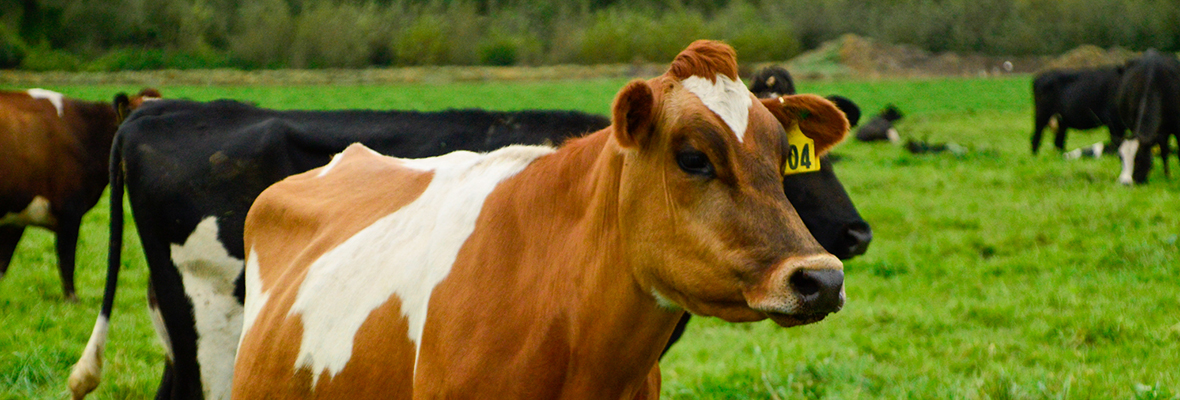
Going into the late lactation period, we need to start thinking about the best way to get the cows and farm ready for next season. What we do now will have a big impact in the new season.
Body condition and transitioning the cows properly from milking to dry are the key points to focus on. Nutrition has a big impact on both of them, so understanding what your cows need at every stage will be the difference between succeeding or failing in your attempt to reduce the mastitis cases after calving (besides all the other metabolic issues related to thin calving cows).
Our target is for mature cows to be at 5.0 BCS and heifers at 5.5. It is a fact that light cows at calving will produce less milk and are less likely to get in calf. On the other hand, cows calving too fat will produce less milk and are more likely to have reproductive and metabolic problems.
When balancing a diet for a late-lactating cow at 500kg LWT, we aim to offer at least 20kg of feed, this is at least 200MJME crude protein of 16-17%, with an NDF% of fibre between 37-40%, starch and sugars between 20-25% and non-fibre carbohydrates around 30%. We need to achieve this because the pasture growth is slowing down and everyone is extending the round length. This basically means pasture availability decreasing and supplements going into the diet to fill the energy gap.
To understand the different requirements between a cow at late lactation and when she is dry, we can use the same 500kg cow as an example:
Let’s say this cow is producing 1.4kgMS per day, so she needs to eat enough energy to stay alive (maintenance requirements around 60MJME), plus walking every day in the paddock and to the shed (10MJME), plus producing 1.4KgMS daily (98MJME), and then also she needs enough to increase her body condition to achieve the 5.0 BCS (another 36MJME if she needs to increase only 0.5BCS).
If we add together all these requirements, this is around 204MJME a day. If we say 1kg of feed has an average of 11MJME/kgDM, she needs to eat 18.55 kgDM but, for this to happen we need to add the wastage (e.g. 20%), so in practice we need to offer 22.25 kg to this cow.
Looking at the same cow for the dry period, she still needs to use energy for maintenance (same 60MJME), she is still walking in the paddock, but not to the shed (7MJME). Let’s say she still needs to put on 0.5 BCS (another 36MJME), and we also need to consider the energy required for being pregnant with the foetus closer to calving (around 12MJME), so in total this cow needs 115MJME. Therefore, using 10.5MJME/kgDM, she needs 10.95 kgDM if you include 20% wastage, and as a result, you need to offer her 13-14kgDM/cow/day.
Let’s now focus on the week prior to drying off. You will have some cows producing below 1kg milk solid and some producing above this. For the first group of cows there is not much adjustment required – simply drop the intakes to maintenance after the last milking for 7 to 14 days (ideally) and maintain access to water all the time. For the second group though, you need to reduce their production, so, a week before drying off, you need to reduce the feed intake by 30-50% and then drop to maintenance once you have dried them off. The main thing is to keep the cows away from the milking shed to avoid stimulating milk let-down.
Cows hate change, so change is a very important tool to help dry them off. Therefore change the signal, e.g. change the milking routine, the time of milking, the diet (as we said above), and add plenty of straw.
There are a few normal on-farm practices that actually do not help us to achieve a properly dried-off cow! So, avoid running the cows down the road or long distances, and avoid loading them onto the truck at the dairy shed the day after they have been dried off. Ideally you want to send the cows straight to the runoff or wait a minimum of 4 days before doing it.
Also, changing to OAD milking a week before is not recommended as it could bring on mastitis problems; there is a train of thought that suggests poor dry-off practices are accountable for 60% of the mastitis in the following season. Keep good hygiene in the shed. Put the dry cows onto a clean dry paddock post dry off. The main thing is to plan a drying-off system to suit the cows, not to suit you or your staff.
What you do now will have a huge influence on cow health, production and profitability next season.